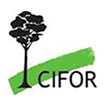
Across Cameroon, from the arid northern steppes to the rolling woodlands and western highlands, communities have sized up the impact of degraded soils and ecosystems on their lives, and decided to take action. Customary rights-holders have taken it upon themselves to adopt agroforestry as a means to boost their revenues; participate in assisted natural regeneration to bring forests back to health; and commit to sustainable land management. However, their investments are far from secure.
Cameroon’s largest potential for forest landscape restoration (FLR) is in national lands, a vague legal category comprising unregistered lands that are occupied or used by communities on the basis of customary arrangements, rather than ownership titles. As things are, the state can dispose of national lands at will to create agroindustrial concessions, forest management units, or protected areas, meaning that communities may be expropriated at any time with little or no compensation.
“It is essential the state puts in place a mechanism to protect the investments of local communities in forest landscape restoration,” said Abdon Awono, scientist with the Center for International Forestry Research-World Agroforestry (CIFOR-ICRAF). “Current land tenure and forestry laws do not offer enough legal security and can discourage individual and collective investments in restoration.”
Drawing on an extensive literature and legal review, a study led by Awono analyzes the links between legal and customary land tenure systems in Cameroon, and what they mean for restoration initiatives. The occasional paper also outlines concrete actions policymakers, funders, and project proponents can take to advance the country’s landscape restoration goals and unlock their sustainable development co-benefits.
As part of a global drive to restore landscapes, Cameroon has committed to bring more than 12 million hectares of forested lands into restoration by 2030; advance land degradation neutrality goals through initiatives like the Great Green Wall; and tackle the drivers of deforestation and forest degradation, which have been accelerating across the Congo Basin in the past decade.
Slash-and-burn agriculture accounts for an estimated 68.5 percent of forest loss in the country, and is compounded by the expansion of mining and commercial agriculture to produce commodities like rubber and palm oil.
Taking restoration to the next level
Cameroon’s international commitments are reflected in a national forest landscape restoration strategy and a range of field initiatives that claim alignment with FLR.
“However, despite the efforts of the state, restoration actions underway in Cameroon are fragmented and scattered,” say the authors. “That is compounded by numerous technical and operational problems, as well as challenges in terms of governance and financial and material resources”.
For a start, projects driven by third parties, like international donors, often fail to fully engage communities in the design of restoration actions, relegating them to symbolic participation in the implementation phase.
“Restoration projects must respond to the needs and priorities of local communities to create ownership,” said Awono, who underscored the importance of taking into account the perspectives of women and minority groups. “The last thing you want is a top-down operation that leaves people wondering what it is all about.”
Working hand in hand with farmers, initiatives can identify the restoration techniques that are best suited to their preferences, capacities, and social norms, including in terms of customary land and natural resource tenure. When planting trees, for example, projects should opt for a community’s preferred species to satisfy local nutrition, health, energy, and construction needs.
Other actions to bring restoration to scale are supporting community-led restoration initiatives to improve their efficiency and outcomes and putting in place sound evaluation and monitoring systems to track the impact of projects, for instance by keeping track of how many trees survive over time rather than just how many were planted.
At a higher level, the analysis calls for the reform of land tenure and forestry policies and regulations in support of restoration efforts; a long-term funding strategy for forest landscape restoration; and the alignment of sectoral policies to ensure coherence in land-use planning and reduce legal insecurity and conflicts over land.
Next research steps
In projects requiring tree planting, access to quality plant material is paramount – especially given that climate change means species and varieties must be chosen based on their ability to adapt to future temperature and water conditions. For Awono, further research is needed to find the best fit for each location and community.
And given the diversity and importance of customary systems organizing access to, and use of, resources, the researcher also pointed out the need to conduct further social science studies on the topic. Building better understanding of traditional land-use and tenure systems, he said, is yet another way to help build common ground in favor of Cameroon’s restoration agenda.
We want you to share Forests News content, which is licensed under Creative Commons Attribution-NonCommercial-ShareAlike 4.0 International (CC BY-NC-SA 4.0). This means you are free to redistribute our material for non-commercial purposes. All we ask is that you give Forests News appropriate credit and link to the original Forests News content, indicate if changes were made, and distribute your contributions under the same Creative Commons license. You must notify Forests News if you repost, reprint or reuse our materials by contacting forestsnews@cifor-icraf.org.












